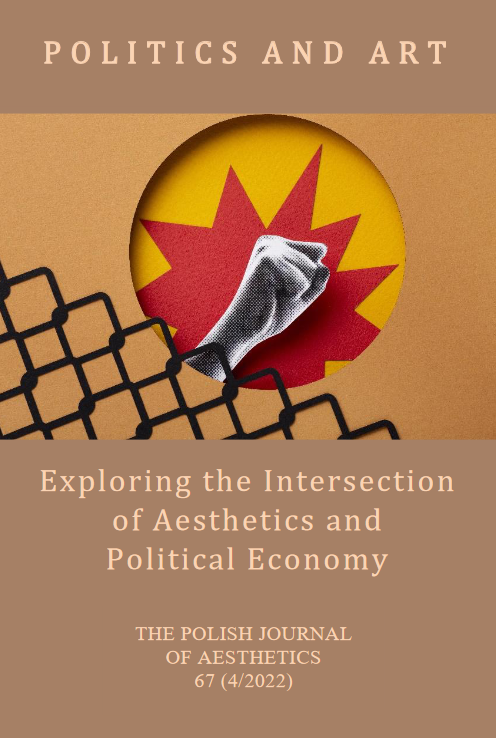 Web Content Display
Web Content Display
 Web Content Display
Web Content Display
 Web Content Display
Web Content Display
email: leszek.sosnowski@uj.edu.pl
 Web Content Display
Web Content Display
CFP: 'Phenomenology in relation to the challenges of contemporary art': Paper submission date extension
Due to the large number of request we have extended the deadline for full paper submissions to the issue 'Phenomenology in relation to the challenges of contemporary art'. All Authors who have not yet submitted their manuscripts are invited to submit up to Sunday 21st January 2018.
Editors: Piotr Schollenberger (University of Warsaw, Poland) and Monika Murawska (Academy of Fine Arts in Warsaw, Poland).
In 1907, Edmund Husserl wrote to Hugo von Hofmannsthal:
The artist who ‘observes’ the world, in order to gain knowledgeof nature and manfor his own purposes, relates to it in a similar way as the phenomenologist. […]When he observes the world, it becomes phenomenon for him, its existence is indifferent, just as to the philosopher (in the critique of reason). The difference is that the artist, unlike the philosopher, dosen’t attempt to found the “meaning” of the world-phenomenon and grasp it in concepts, but appropriates it intuitively, in order to gather, out of its plenitude, materials for the creation of aesthetic forms.
From its very beginnings, phenomenology has carefully treated art and aesthetic phenomena as a special sphere, depicting the fact of the appearance of things, and of the world, within its framework. The aesthetic attitude enables the phenomenal nature of an experience to be captured: ‘to be is to appear’. At the same time, since the time of Husserl, phenomenological descriptions, as a result of corrections made by Martin Heidegger, Maurice Merleau-Ponty, and many others, began to account for not only objective but also existential andcorporal dimensions.The description of ‘pure essences’ was perhaps not as interesting for artists and viewers of works of art as new ways to characterise aesthetic experience, taking into account the corporeal, affective, temporal, spatial, and cultural dimensions of art. In the work of some contemporary art theorists and artists one can find traces of the revolution represented by the discovery of the phenomenological method, as well as of the evolution through which it passed. Today, in the context of the emergence of new forms of art, such as performance art, installations, and videoart, in the face of the changes that have occurred in thinking about architectural form and sculpture, in relation to the new languages of dance and new concepts of listening and responding to music, we are well aware that, following Heidegger, we should reject the notion thatart ‘belongs in the domain of the pastry chef. Essentially it makes no difference whether the enjoyment of art serves to satisfy the refined taste of connoisseurs andaesthetes or serves for the moral elevation of the mind.’ Involvement in the world –which appears to us in many forms and shapes of which artists attempt to make sense – is a common point of reference for contemporary phenomenologists as well as for those who, in contesting certain traditional theoretical assumptions, define themselves as post-phenomenologists.
We invite you to submit articles dealing with the issue of a meeting ground of phenomenology on one hand and assorted artistic practicesand models of viewing art from the second half of the twentieth century on the other. We are less interested in approaches justifying the ‘relevance of phenomenology’, since this need not be justified and therefore does not constitute a philosophical problem, than in those showing how an attitude regarding the sphere of ‘appearance’ can enable the discovery of new dimensions of art and new kinds of aesthetic experience.
Paper submission date extension. Due to the large number of request we have extended the deadline for full paper submissions to the issue 'Phenomenology in relation to the challenges of contemporary art'. All Authors who have not yet submitted their manuscripts are invited to submit up to Sunday 21st January 2018.
We invite all Authors to read the instructions, ‘For Authors’, and make sure that each article is complete (including an abstract, keywords, a bibliography, and note on the author) at the time of submission. Full papers should be submitted using the submissions page, which can be found here.

